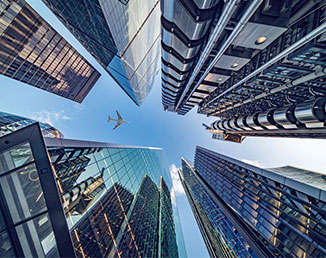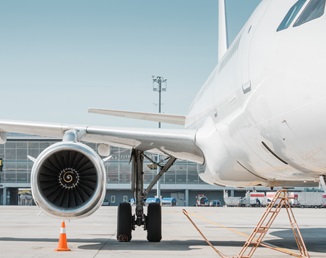
Cirium Ascend Consultancy is trusted by clients across the aviation industry to provide accurate, timely, and insightful aircraft appraisals. The team provides the valuations and analysis the industry relies on to understand the market outlook, evaluate risks and identify opportunities.
Discover the team’s industry reports & market commentaries. Read their latest expert analysis, viewpoints and updates on Thought Cloud.

Yiru Zhang, Senior Valuation Analyst, Cirium Ascend Consultancy
Let’s begin by examining where values and lease rates stand today by aircraft category, and how they’ve moved during the last 12 months and last 60 months. The last 60 months effectively represents a benchmark against 2019, meaning pre Covid.

You can see that in the last year, there were very large improvements in values and lease rates of narrowbody and widebody jets. For narrowbodies, the increases have been in the high teens on a fleet-weighted average basis.
For widebodies, lease rates on a fleet-weighted average basis have risen almost 30%.
But given the significant decreases during Covid, on a weighted average basis this shouldn’t be a surprise.
And in fact, you can see that for widebody lease rates there is almost no visible rent bar, which means they’ve only just come back to the pre-Covid level.
Values are still almost 20% down over 2019 and we think that is because a big portion of the fleet were relatively young A330ceos and 777s, production of which concluded during the Covid period. Some of these young fleets, i.e. aircraft that are seven to 10 years old, had significant value declines which may never be fully recovered.
Narrowbodies on the other hand have seen lease rates recover to 2019 levels, but values are actually ahead, by about 15%.
The regional aircraft market remains significantly below 2019 levels.
That’s largely driven by a lack of flying activity in the USA, largely due to the pilot shortage, especially for the regional jet sector. There are also additional factors contributing to this decline, such as rising fuel costs and increasing operational expenses. And in the turboprop market, production has now ended for a lot of types. The DHC 8-400, for which production has been suspended, has seen a lot of market availability.

Source: Cirium Core, passenger jets only
To appreciate this chart, the concept of base value must first be understood. Base value is defined as the theoretical market where supply and demand are exactly balanced. So in good economic times when demand exceeds supply, market to base value should be above one, while in the obverse market value will be lower base and therefore the ratio is below one.
The chart illustrates the “hot” market that existed at the beginning of 2019, then the downturn triggered by Covid, followed by the recovery starting in Q3 2021 leading through to today. Single-aisle market value exceeds base by 25%, while twin-aisle market value is also more than 15% above base. The twin-aisle increases are driven by some recent market value revisions, the latest of which being the A330ceo, which obviously has a large inventory that impacts the fleet-weighted result here.

Source: Cirium Core Current Market Values, Current Base Values and fleet counts as at 14 Jun 2024
Meantime the single-aisle ratio is largely being driven upwards by mid-life and older aircraft where demand remains very strong as a consequence of new aircraft delivery deficits which is presently driving strong demand and hence strong market values for those older aircraft. As shown in the above chart, the single-aisle MV/BV ratio is close to parity for new aircraft but increases with age, reaching approximately 160% by retirement age.

Source: Cirium Core, passenger jets only
The long term picture using the same data illustrates how today’s MV/BV ratios are at record levels. It also shows how widebody aircraft ratios did not fully recover after the global financial crisis of 2007/2008. They never even exceeded base for an entire 15-year period, only finally transitioning to positive from late last year, beginning of this year.
Read more Ascend Consultancy articles. Learn more about Cirium Fleets Analyzer.



























































